
Russians in Armenia: The Story of One Diaspora
/ Главная / Russkiy Mir Foundation / Publications / Russians in Armenia: The Story of One DiasporaRussians in Armenia: The Story of One Diaspora
Irina Mkrtchyan
There are about two million Armenians living in Russia today. But when it comes to Russians living in Armenia, there are about 15,000 people only. But both of them continuously split time between two homes and strengthen the ties between our countries - economic, cultural, and spiritual. And these ties go deep into the past, many centuries ago. We will tell you in this article how the first Russians settled in Armenia and how their descendants live in Armenia today imbued with the local culture while preserving the national traditions.
Ryabinushka Ensemble
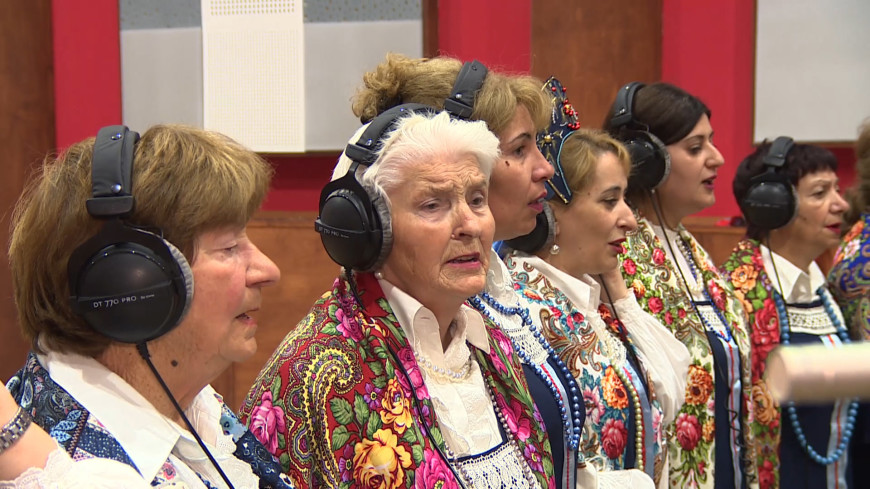
Photo credit: Mir 24
Life in the provincial town of Stepanavan is no different from hundreds of others. The daily routine is simple: work, home, leisure time in front of the TV, and in the morning again - work, family, and a simple leisure time. 11 years ago retired teacher Lyubov Bondareva met like-minded people among other Russian women and founded the Ryabinushka amateur performance group in Stepanavan. A long time ago, songs used to be sung in their houses for both celebrations and sorrowful occasions. But modern life is very different, it is not slow-paced anymore; the continuous rush has displaced the Russian song. The singers of the Ryabinushka refused to put up with the situation. So they began to rehearse several times a week and prepared their repertoire of Russian folk and pop songs.
The Ryabinushka have no money to rent a hall for rehearsals yet, so they rehearse in their own houses. People in Yerevan also found out about the unusual ensemble and the Public Radio of Armenia decided to give a present to the Ryabinushka and to record their entire repertoire in a professional studio to keep the Russian songs in the golden fund of the country forever.
"We gave our first concert in the Year of the Teacher. After we sang, everyone liked it very much, and we decided to develop further. We sewed costumes. We were invited to a festival at the House of Moscow in Yerevan and won the grand prize there, and after that, we sang better and better. The team is very good, the people are intelligent, interesting, humorous, so it is a real pleasure to work with them," the head of the Ryabinushka amateur ensemble Lubov Bondareva says.
Evdokiya Aleksyutina-Homonenko is the oldest in the team. She had a difficult fate: as a child in her native Bryanschina, she hardly escaped from the reprisals by the Nazis. The family hid for several months in the woods. Then she worked in various places, including the mine, and the post offices. Evdokiya Alexandrovna is 81, but she prefers to rearrange the numbers and says that singing Russian songs rejuvenates her. So the number 18 is more to her liking.
"I must tell you when I moved to Voronezh, I participated in an amateur art group until I got married and moved to Germany. There I also sang in amateur groups. It's been like this since my youth: I'm happy, I come, I sing, it seems to me that my life goes on as if I am not an old woman but a young one," confesses Evdokiya Aleksyutina-Gomonenko, a member of the Ryabinushka ensemble.
At the Ryabinushka concerts, there is always a lot of spectators and not only representatives of the Russian diaspora. Many Armenians come to listen to Russian songs.
How did the Russians come to Armenia?
Stepanavan, Kirovakan, and now Vanadzor, are the cities in the Lori Province that have always had numerous Russian population. The first Russian settlements in Armenia were established in 1804. They were Cossacks sent to guard the border between the Russian and Ottoman Empires. Wherever a Russian came to live, he, first of all, built a church. There was once a wooden church in place of a stone church in Vanadzor.
“It was made of wood. During the Russo-Persian War, the Persians burned the wooden church, and then in 1893 they built a stone church, and it was consecrated in honor of St. Nicholas the Wonderworker. And in 1993, on September 21, the day of the Nativity of the Blessed Virgin Mary, it was consecrated and named in honor of the Nativity of the Blessed Virgin Mary," says Albina Goryan, a parishioner of the Russian Orthodox Church of the Nativity of the Blessed Virgin Mary.
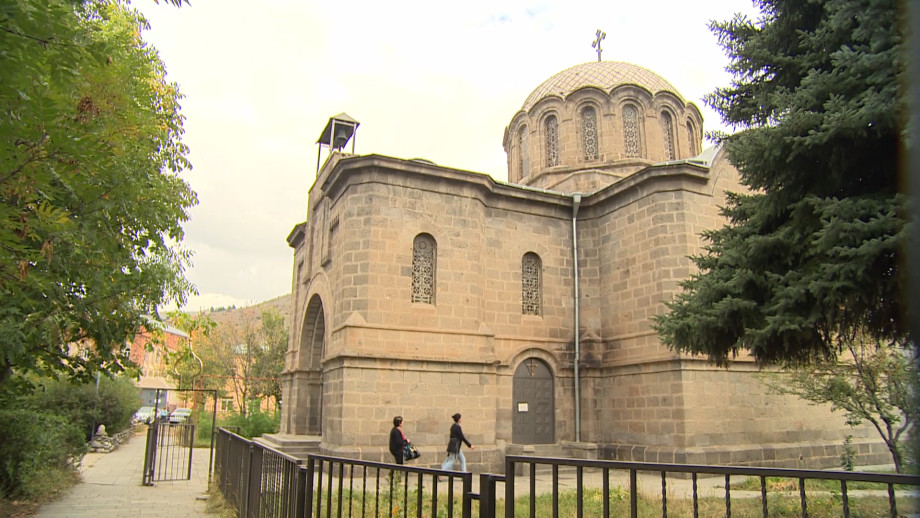
Photo credit: Mir 24
In 1827 the fortress of Erivan was recaptured from the Persians as a result of the Russian campaign; such large regions of Eastern Armenia as the Erivan Khanate and Nakhichevan Khanate were annexed to Russia. The lands that were annexed to Russia had to be populated by Russians so that they would defend the border with arms. Even entire villages populated by Russians - Saratovka, Privolnoye, Pushkino, Novoseltsevo - were formed in the Lori region at that time.
Molokans in Armenia
Around 1830, the first Molokans, who had migrated from Tambov Province, also arrived in Armenia. In Russia, Molokans were persecuted as dissenters and apostates from the Orthodox faith. They do not venerate saints, do not worship the cross and icons, and do not make the sign of the cross. They celebrate Easter, but not Christmas. They drink milk during Lent, which is why they are called Molokans (milk is “moloko” in Russian). The Molokans do not baptize children, but they bring them to the chapel, read a chapter from the Gospel in the presence of the child, and publicly announce his/her name. The same ceremony also consecrates the marriage union.
In Soviet times there were about 30 Molokan villages in Armenia, but now there are two - Lermontovo and Fioletovo near the city of Dilijan. The Molokan Old Believers are considered to be sectarians. Catherine the Great disliked them and deported them from Russia. However, they are known in Armenia as very diligent and hardworking people. They do not like taking pictures and videos as it is considered to be a sin. Over two centuries the Armenian Molokans have not mingled with the local population (marriages are concluded only within their ethnic group), therefore they have preserved their Slavic type with blond hair and blue eyes. The Molokans condemn smoking and drinking and have a negative attitude toward divorce. Thanks to their diligence, the Molokan families live in prosperity, picking cabbage in accordance with a special recipe and selling it in the local markets. The Molokans also provide fresh milk to all the neighboring towns and villages. Milk is a sacred beverage for them, so they never dilute it with water and sell only high-quality products.
The Molokans have lived in Armenia for almost two centuries. They call this land their motherland, but they keep their traditions, language, and customs as sacred. The Armenian Molokans remain an invaluable source of knowledge about Russian culture in the early 19th century.
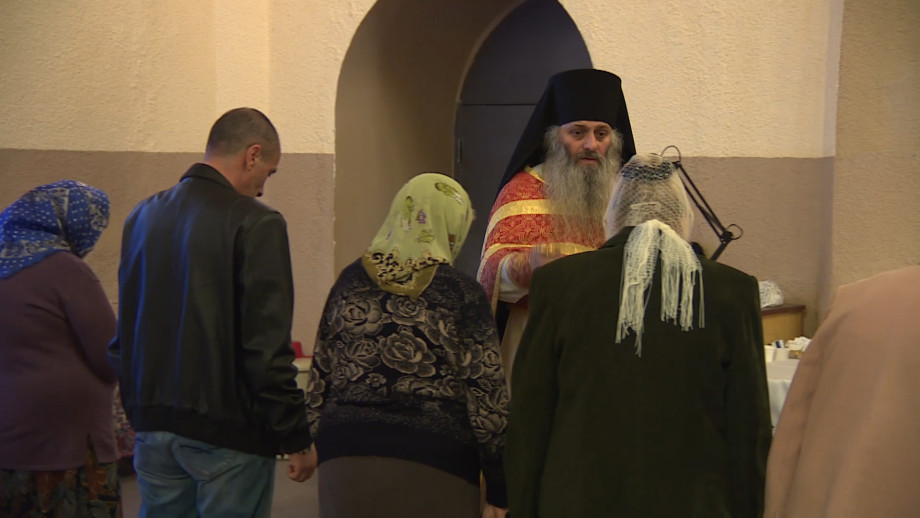
Photo credit: Mir24
Russian House in Yerevan
The Russian Center of Science and Culture, now simply Russian House in Yerevan, brings together all Russian people and Russian compatriots who live in Armenia. Here children and adults learn the Russian language absolutely free of charge. The applicants are trained to enter Russian universities. Every year the Russian government allocates about 200 quota places for Armenian boys and girls to study in the best Russian universities for free. And this project is also carried out by the staff of the Russian House.
There are ten organizations of compatriots in Armenia. These people are Armenians by nationality. However, they were educated in Russia and raised in Russian culture. They are regulars at the Russian House. They enjoy celebrating holidays according to the Russian calendar together. They go to concerts, exhibitions, and theatrical performances of Russian artists who come to Armenia on tour.
Vadim Fefilov is a former military correspondent for leading Russian TV channels and the head of the Russian House in Yerevan. He has been living in Armenia for six months only. He admits that at first, he had low expectations, but he has been won over by Yerevan, and most of all by its people who are easy and interesting to communicate with. As a true Russian, he promotes a rich Russian culture in Armenia.
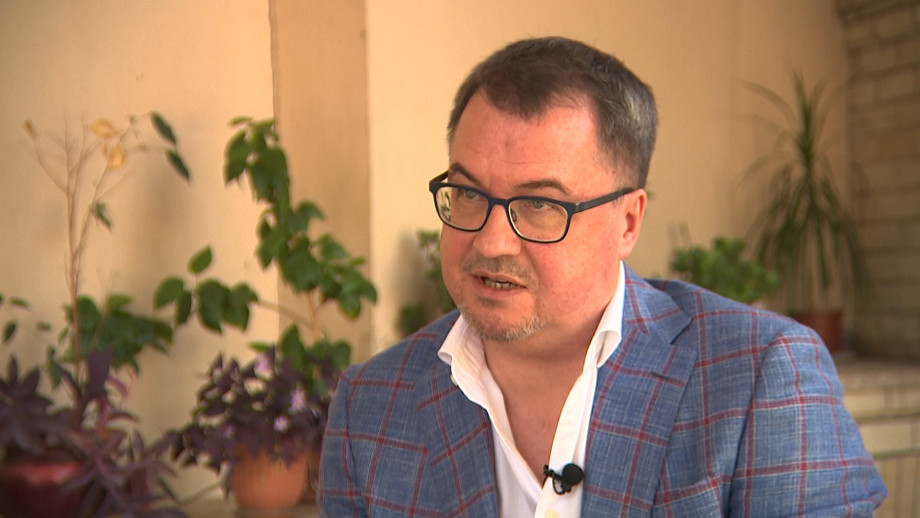
Photo credit: Mir24
"I dream to have the Russian center of science and culture in Yerevan that would host performances of the level of Moscow theaters, that people would come to the performances by Tabakerka Theater, our modernist theaters, that our famous poets would come, welcome top people who are interesting to Russians," shares Vadim Fefilov, head of the Russian House (Rossotrudnichestvo) in Yerevan.
There is a small Russian diaspora of about 15,000 people in Armenia today. But there are about two million Armenians living in Russia. These people all the time split their life between two countries and strengthen the ties between Armenia and Russia.
Russia is Armenia's number one partner in economic terms. Fifteen hundred companies with Russian capital operate in Armenia. One of them is a subsidiary of Russian Railways, the South Caucasus Railway. Alexei Melnikov was appointed the head of Armenian Railways relatively recently. A native of Rostov-on-Don, he used to think that the Northern Caucasus was not much different from the Southern Caucasus. But the experience has shown that he was wrong.
"I arrived in February, and as I toured the entire road - from Ayrum, from the border with Georgia to Zod - I was amazed at how different Armenia can be - from places where there is still snow to places where flowers are in full bloom. I really like domesticity in Armenia; family in Armenia is not just a word, it is actually a cult, and I like it a lot," says Alexei Melnikov, General Director of the South Caucasus Railway.
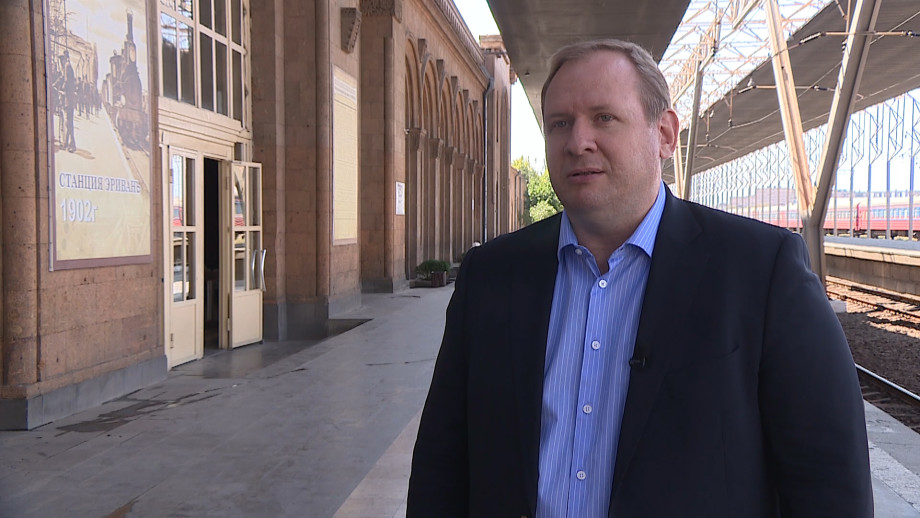
Photo credit: Mir24
Armenia quickly becomes a second home for Russians, where they feel comfortable. They pray in Orthodox churches; there are two Russian churches in Yerevan alone. They work under favorable economic conditions. Therefore, the number of joint Armenian-Russian companies is constantly growing. And more and more Russians are not in a hurry to leave the warm and sunny land of Armenia.
New publications

 Mikhail Kalatozov, a director who transformed the world of cinematography in many ways, was born 120 years ago. He was a Soviet film official and a propagandist. Above all, he was capable of producing movies that struck viewers with their power and poetic language.
Mikhail Kalatozov, a director who transformed the world of cinematography in many ways, was born 120 years ago. He was a Soviet film official and a propagandist. Above all, he was capable of producing movies that struck viewers with their power and poetic language.  Ukrainian authorities have launched a persecution campaign against the canonical Ukrainian Orthodox Church (UOC), the biggest one in the country's modern history. Over the past year, state sanctions were imposed on clergy representatives, searches were conducted in churches, clergymen were arrested, criminal cases were initiated, the activity of the UOC was banned in various regions of the country, and monasteries and churches were seized.
Ukrainian authorities have launched a persecution campaign against the canonical Ukrainian Orthodox Church (UOC), the biggest one in the country's modern history. Over the past year, state sanctions were imposed on clergy representatives, searches were conducted in churches, clergymen were arrested, criminal cases were initiated, the activity of the UOC was banned in various regions of the country, and monasteries and churches were seized.  When Nektary Kotlyaroff, a fourth-generation Russian Australian and founder of the Russian Orthodox Choir in Sydney, first visited Russia, the first person he spoke to was a cab driver at the airport. Having heard that Nektariy's ancestors left Russia more than 100 years ago, the driver was astonished, "How come you haven't forgotten the Russian language?" Nektary Kotlyaroff repeated his answer in an interview with the Russkiy Mir. His affinity to the Orthodox Church (many of his ancestors and relatives were priests) and the traditions of a large Russian family brought from Russia helped him to preserve the Russian language.
When Nektary Kotlyaroff, a fourth-generation Russian Australian and founder of the Russian Orthodox Choir in Sydney, first visited Russia, the first person he spoke to was a cab driver at the airport. Having heard that Nektariy's ancestors left Russia more than 100 years ago, the driver was astonished, "How come you haven't forgotten the Russian language?" Nektary Kotlyaroff repeated his answer in an interview with the Russkiy Mir. His affinity to the Orthodox Church (many of his ancestors and relatives were priests) and the traditions of a large Russian family brought from Russia helped him to preserve the Russian language.

 The leaders of the Friends of the Great Russia cultural association (Amici Della Grande Russia) in Italy believe that the Western policy of abolishing Russian culture in Europe has finally failed. Furthermore, it was doomed to failure from the beginning.
The leaders of the Friends of the Great Russia cultural association (Amici Della Grande Russia) in Italy believe that the Western policy of abolishing Russian culture in Europe has finally failed. Furthermore, it was doomed to failure from the beginning.  Name of Vladimir Nemirovich-Danchenko is inscribed in the history of Russian theater along with Konstantin Stanislavski, the other founding father of the Moscow Art Theater. Nevertheless, Mr. Nemirovich-Danchenko was a renowned writer, playwright, and theater teacher even before their famous meeting in the Slavic Bazaar restaurant. Furthermore, it was Mr. Nemirovich-Danchenko who came up with the idea of establishing a new "people's" theater believing that the theater could become a "department of public education."
Name of Vladimir Nemirovich-Danchenko is inscribed in the history of Russian theater along with Konstantin Stanislavski, the other founding father of the Moscow Art Theater. Nevertheless, Mr. Nemirovich-Danchenko was a renowned writer, playwright, and theater teacher even before their famous meeting in the Slavic Bazaar restaurant. Furthermore, it was Mr. Nemirovich-Danchenko who came up with the idea of establishing a new "people's" theater believing that the theater could become a "department of public education."  "Russia is a thing of which the intellect cannot conceive..." by Fyodor Tyutchev are famous among Russians at least. December marks the 220th anniversary of the poet's birth. Yet, he never considered poetry to be his life's mission and was preoccupied with matters of a global scale. Mr.Tyutchev fought his war focusing on relations between Russia and the West, the origins of mutual misunderstanding, and the origins of Russophobia. When you read his works today, it feels as though he saw things coming in a crystal ball...
"Russia is a thing of which the intellect cannot conceive..." by Fyodor Tyutchev are famous among Russians at least. December marks the 220th anniversary of the poet's birth. Yet, he never considered poetry to be his life's mission and was preoccupied with matters of a global scale. Mr.Tyutchev fought his war focusing on relations between Russia and the West, the origins of mutual misunderstanding, and the origins of Russophobia. When you read his works today, it feels as though he saw things coming in a crystal ball...